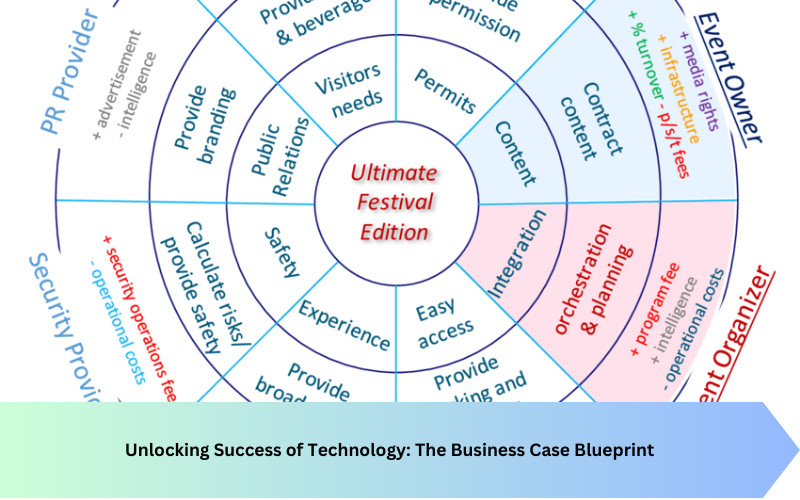In the dynamic landscape of commerce, every decision made by a company carries a weight that ripples through its entire structure. Whether it’s launching a new product, entering a new market, or investing in technology, the impetus behind these decisions often rests on a solid foundation: the business case. Crafting a compelling business case is akin to architecting a blueprint for success. It’s a strategic roadmap that not only elucidates the rationale behind a proposed action but also quantifies its potential benefits and risks. In this blog, we delve into the essence of the business case, its indispensable role in corporate decision-making, and how to construct one that resonates with stakeholders and drives strategic initiatives forward.
Understanding the Business Case: A Nexus of Strategy and Analysis
At its core, a business case is a persuasive argument that justifies a particular course of action from a financial, strategic, and operational standpoint. It serves as a guiding beacon, aligning disparate stakeholders towards a common goal by articulating the rationale, feasibility, and expected outcomes of a proposed initiative.
The Anatomy of a Persuasive Business Case
- Executive Summary: A succinct overview that encapsulates the essence of the business case, highlighting key insights, proposed actions, and anticipated outcomes.
- Problem Statement: Clearly define the issue or opportunity that the proposed initiative aims to address. Articulate the pain points and challenges faced by the organization, providing context for the proposed solution.
- Market Analysis: Conduct a thorough examination of the market landscape, including industry trends, competitive analysis, and target audience demographics. Identify market gaps and opportunities that the proposed initiative can capitalize on.
- Solution Overview: Present the proposed solution or course of action in detail, outlining its features, benefits, and how it addresses the identified problem statement. Highlight any unique selling propositions or competitive advantages.
- Financial Projections: Provide comprehensive financial projections, including revenue forecasts, cost estimates, return on investment (ROI) analysis, and break-even analysis. Quantify the potential financial impact of the proposed initiative, demonstrating its viability and profitability.
- Risk Assessment: Conduct a thorough risk assessment, identifying potential obstacles, uncertainties, and mitigating strategies. Anticipate potential challenges and demonstrate preparedness to navigate them effectively.
- Implementation Plan: Outline a detailed implementation plan, including timelines, resource allocation, and key milestones. Clearly define roles and responsibilities, ensuring accountability and transparency throughout the execution phase.
- Evaluation Metrics: Define measurable KPIs (Key Performance Indicators) to track the success and impact of the proposed initiative post-implementation. Establish benchmarks for performance evaluation and continuous improvement.
Constructing a Compelling Business Case: Best Practices
- Clarity and Conciseness: Communicate your ideas with clarity and conciseness, avoiding jargon or technical language that may alienate non-specialist stakeholders.
- Data-Driven Insights: Ground your arguments in robust data and analysis, leveraging market research, financial modeling, and empirical evidence to substantiate your claims.
- Stakeholder Alignment: Engage key stakeholders early in the process, soliciting their input and buy-in to ensure alignment and support for the proposed initiative.
- Visual Impact: Utilize visual aids such as charts, graphs, and infographics to enhance the readability and visual impact of your business case, making complex information more accessible and engaging.
- Narrative Storytelling: Craft a compelling narrative that resonates with stakeholders on an emotional level, illustrating the potential benefits and transformative impact of the proposed initiative.
Five FAQs About Business Cases
- Why are business cases important?
- Business cases provide a structured framework for evaluating and justifying strategic initiatives, enabling informed decision-making, and mitigating risks.
- Who should be involved in creating a business case?
- Key stakeholders from across the organization, including executives, department heads, finance professionals, and subject matter experts, should collaborate to ensure a comprehensive and holistic perspective.
- What are the key components of a business case?
- A business case typically includes an executive summary, problem statement, market analysis, solution overview, financial projections, risk assessment, implementation plan, and evaluation metrics.
- How can I ensure the success of my business case?
- Engage stakeholders early, communicate clearly and persuasively, leverage data-driven insights, and continuously refine your business case based on feedback and changing circumstances.
- What role does storytelling play in crafting a compelling business case?
- Storytelling humanizes the business case, making it relatable and engaging for stakeholders. By weaving a narrative that highlights the potential impact and benefits of the proposed initiative, you can inspire confidence and garner support for your vision.
- If you read more blogs then follow us.





